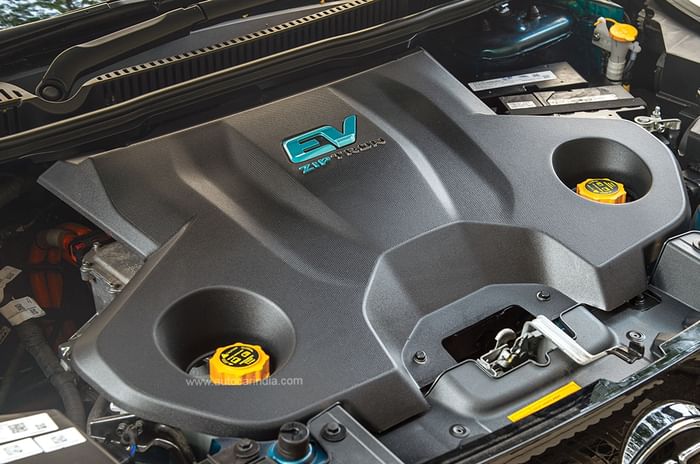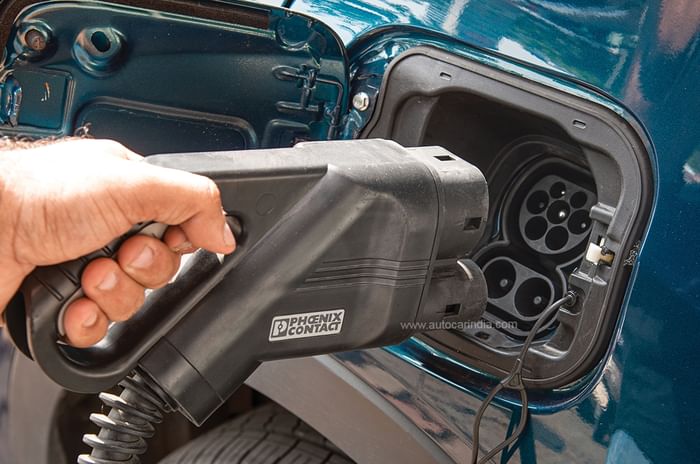GOOD FOR: Relaxed driving, Low running costs
LOOK OUT FOR: Software bugs, Charging port issues
Tata launched the Nexon EV in January 2020, and it was the brand’s first electric offering that could be bought by private buyers. The electric SUV has since won over many customers and established itself as India’s highest-selling electric car. It offers a refined driving experience, is lighter on your wallet than conventional cars and has zero tail-pipe emissions too. So there’s plenty of reasons to get a used one in your garage, but before you do, here are a few things to keep in mind.
Tata Nexon EV: powertrain, charging, range
Powering the Nexon EV is Tata’s Ziptron powertrain, which comprises a front-axle-mounted 129hp, 245Nm electric motor that draws power from a 30.2kWh lithium-ion battery pack. Tata also launched the Nexon EV Max earlier this year, which comes with a larger battery and more power, but that model is simply too new right now to make it to the used car market.
In terms of charging times, a standard 15A AC charger will take about 8-9 hours to charge the battery to 100 percent, while a CCS2-compatible DC fast charger will juice the battery up to 80 percent within an hour. The EV also comes with an energy regeneration function that replenishes the battery during coasting and braking.

Tata provided a 3.3kWh portable charger and a wall-mounted home charger with the Nexon EV, so ensure you get these two from the previous owner when you make the purchase. It’s also important to get the home charger installed by a trained technician.
While the Nexon EV claims a range of 312km (ARAI), it is lower in the real world. In our tests, it achieved 208km in a mixed city-highway driving cycle. A higher degree of regeneration while driving in the city resulted in a range of 216km, whereas on the highway, with the motor constantly working with less regeneration, the range stood at 201km on a full charge. Now, while this may seem low, a 200km real-world range will be more than enough for most people’s daily commutes.
Tata Nexon EV: variants, features and warranty
The Nexon EV was launched in three variants – XM, XZ+and XZ+ Lux. Considering it’s the base variant, the XM is quite well equipped with LED DRLs, auto climate control and keyless entry. However, the mid-spec XZ+ is the one to go for, as it has all the basics covered and then some. It features 16-inch alloys power adjustable and folding mirrors, a 7.0-inch colour MID and an Android Auto and Apple CarPlay-compatible 7.0-inch touchscreen infotainment system. However, if you aren’t on a serious budget and want all the frills, the top-spec XZ+ LUX adds in a sunroof, leatherette upholstery, auto headlights and wipers, and an eight-speaker Harman audio system.

Given that this is a new technology, an EV’s longevity and long-term resale are somewhat unknown, and there are concerns about battery life. To assuage this, Tata offers the Nexon EV with an 8-year/1,60,000km warranty on the motor and battery, while the rest of the car has a standard 3-year/1,25,000km warranty. And this should take care of any short to midterm worries. The EV was also offered with a 5-year extended warranty package, so if you can, try and get one that has been optioned with it. There have been some issues with the Nexon EV but many of them were related to software, which has been ironed out by periodic updates. Hence, ensure that the car you’re looking at has up-to-date software. Tata’s service network is also established across the nation, which should give you peace of mind.
What to look out for in a second-hand Tata Nexon EV
Software bugs

Few owners have complained about software glitches in their Nexon EV. In some cases, the EV goes from ‘Drive’ to ‘Neutral’ while it is running, and in some other cases, the battery’s state of charge drops considerably in a matter of seconds. Both these issues are related to the Nexon EV’s Battery Management System (BMS), so ensure that the software is up to date.
Charging port issues
Some owners have faced issues with the charger getting stuck in the charging port. To remove it manually, one has to access a release line that is tucked away in the front wheel arch. Some have also faced issues with the charger not locking in place. Both these things are worth checking out before you make the purchase, and if there is an issue, get it rectified from an authorised service centre.

Although a rare issue, some Nexon EV owners have complained about the AC system not cooling effectively or completely shutting down. On a test drive, check whether AC works properly and cools the cabin effectively.
Second-hand Tata Nexon EV price and resale value
Rs 10 lakh-14 lakh
Being a relatively new model that’s seeing good demand, prices for used Nexon EVs are on the higher side. Still, there is scope for negotiation, so you should be able to get one for a reasonable price.
Years produced 2020-present | Price when new From Rs 13.99 lakh (ex-showroom, India) | Motor Permanent Magnet Synchronous |
Power 129hp | Torque 245Nm | Ground clearance 205mm |
Boot space 350 litres | Range 216/201km per charge (City/Highway) |
Also see:





































